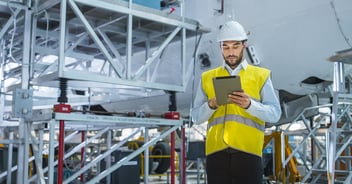
- Home
- Technology ERP
- Information: Do Not Share, Just Commoditize?
Information: Do Not Share, Just Commoditize?
Published :
Information, is it mine or yours?
In today's social globe, information travels much faster than what the author expected. While this brings in great reach for the author, within an organisation, this does not get any great degree of acceptance.
The power of social brings great visibility to the author. The information shared is nearly public domain and is published to offer visibility to the author or the subject.
Within the organisation, the situation is very different. The concept of visibility is directly linked with career growth.
Common perceptions on information sharing include:
and a whole lot more...
Sharing normally means I own the content, and I'm OK for you using it.
I usually am amused when I get an Spreadsheet for simple utilities that is password protected.
While I appreciate the ownership of the concept, the very fact that its in public domain implies that we offer others the right to use and interpret the content. "Its ours while we think through, visualise, scribble, give it a shape, rehearse, feel proud, and click send from our mail box" - isn't that a great experience. Once sent its the social globe that owns it.
The two decades of industry experience, has taught me a few basic realities on information sharing.
While I fully appreciate and understand IP and Patents, the drive to creativity is driven by sharing and letting others improvise.
It would be a better place to live, if we are to organically grow on social creativity..
While GNU, Creative Commons, Open Source are all for declaring these as public assets (with certain limitations), in my experience, anything that cannot be enforced by design is extremely costly to enforce by inspection.
Back to the start. "Information, is it mine or yours ?". My take "Concept Mine, Interpretation Yours, Benefit Ours".
Im sure you are also facing such challenges, what do you feel?
This blog was originally posted by Srinivasan Ramasamy, Vice President – Technology at Ramco Systems on Innovation Insights Blog.
Enterprise asset management (EAM) involves the management of mission critical assets of an organization throughout each asset's lifecycle. EAM is used to plan, optimize, execute, and track the needed maintenance activities with the associated priorities, skills, materials, tools, and information. The aim is to optimize the quality and utilization of assets throughout their lifecycle, increase productive uptime and reduce operational costs.
Enterprise asset management (EAM) involves the management of the maintenance of physical assets of an organization throughout each asset's lifecycle. EAM is used to plan, optimize, execute, and track the needed maintenance activities with the associated priorities, skills, materials, tools, and information.
The software helps in effective maintenance of assets through preventive, predictive, shutdown and breakdown maintenance strategies. The system also helps enterprises mitigate equipment risks by enhanced safety standards. The streamlined operations and improved asset performance helps organizations increase their investment effectiveness.
EAM is important because it helps organizations track, assess, manage and optimize asset quality and reliability. Asset intensive Organizations have hundreds, thousands, even millions of assets which needs to be maintained to maximize / optimize life of these assets to increase the return on investment.
The key features of effective EAM are:
Asset Intensive companies under the following Industries :
Contact us for a meeting and schedule a demo
This differs on case to case basis, based on the type of installation and unique industry specific requirements. Contact us for a meeting and schedule a demo.
This differs on case to case basis, based on the type of installation and unique industry specific requirements. Contact us for a meeting and schedule a demo.
Stay Connected, follow us on LinkedIn / Twitter to know more about EAM Software latest trends.

All Rights Reserved. © Copyright 2024. Ramco Systems.